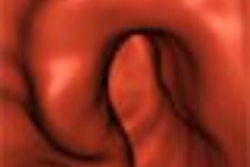More than half of physicians aged 50 to 65 years are planning to retire, seek non-clinical jobs, or significantly reduce the number of patients they see in the next one to three years, according to a new survey by Merritt, Hawkins & Associates, a physician search and consulting firm.
Only 41% of radiologists had such changes in mind, but the results suggest nevertheless that the flight of older physicians from traditional patient care practices could greatly exacerbate ongoing provider shortages.
"Traditionally, physicians in their 50s and early 60s have been the workhorses of medicine," said Joseph Hawkins, CEO of Irving, TX-based MHA. "If these physicians stop seeing patients, millions of patient visits will have to be absorbed by an already limited number of doctors."
The survey was mailed to 5,000 physicians between the ages of 50 to 65 in 13 medical specialties practicing in all 50 states, MHA said. The company received 436 completed responses for a response rate of 8.7% from all physicians including radiologists. The respondents included 21 radiologists, whose responses are broken out separately in this report. Overall, the radiologists who responded seemed happier with their circumstances compared to physicians as a whole.
The survey indicates that 8% of physicians (6% of radiologists) between ages 50 and 65 plan to retire in the next one to three years, 10% (0 radiologists) plan to seek non-patient care medical positions, and 3% of physicians (0 radiologists) plan to seek jobs outside of medicine. Six percent of physicians (17% of radiologists) plan to work as locum tenens, 17% of physicians (6% of radiologists) plan to close their practices to new patients or significantly reduce their workloads, and 7% (12% of radiologists) plan to seek other non-clinical career alternatives.
Each of these options would limit patient access to physicians 50 or older, who comprise 38% of all doctors, according to the American Medical Association. More than 255,000 U.S. physicians are between the ages of 50 and 65, the AMA reports.
Do younger docs work hard enough?
The survey also indicates that many senior physicians believe that physicians coming out of training today are not as dedicated or hard-working as are older doctors. Sixty-four percent of physicians (53% of radiologists) said that physicians coming out of training today are less dedicated and hard-working than physicians who came out of training 20 to 30 years ago.
Still, about 30% of physicians (47% of radiologists) affirmed that doctors coming out of training today are just as dedicated and hard-working as physicians who came out of training 20 to 30 years ago. Not a single physician or radiologist said that physicians coming out of training today are more dedicated and hard-working than physicians who came out of training 20 to 30 years ago.
"There is a pervasive cultural rift between many Baby Boom doctors and Generation X doctors," Hawkins said. "Whether valid or not, many older physicians see themselves as more wedded to medicine than are younger doctors."
The survey also suggests that disillusionment among experienced physicians runs deep, though in this category, radiologists were substantially more satisfied. Overall more than half of the physicians said they would not choose medicine as a career if they were starting out today, compared to 29% of radiologists who would choose non-medical careers.
And while just 36% of physicians indicated that they would recommend medicine as a career to their children or to young people, 76% of radiologists would recommend medical careers to the next generation.
Finally, close to half of the physicians, and three-fourths of radiologists, said they believed the quality of healthcare in the United States has generally improved in the last 20 years. Meanwhile, 33% of physicians overall and 18% of the radiologists said the quality of healthcare has generally declined.
By Phil MillerAuntMinnie.com contributing writer
December 23, 2003
Phil Miller is an employee of Merritt, Hawkins, and Associates. A free copy of the survey is available from MHA by calling (800) 876-0500, or by visiting www.merritthawkins.com.
Related Reading
Salary offers to radiologists jump 11%, July 14, 2003
Radiologists tough to recruit, survey finds, February 25, 2003
Copyright © 2003 AuntMinnie.com



















